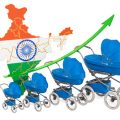Introduction to Hearing Aids and Hair Concerns in India
In recent years, the usage of hearing aids has seen significant growth across India, reflecting both advancements in healthcare accessibility and rising awareness about hearing health. However, when it comes to integrating hearing aids into daily life, unique cultural factors come into play—especially those related to hair and grooming practices. In Indian society, hair is not merely a personal attribute but holds deep cultural significance, often associated with identity, tradition, and social status. Grooming rituals, such as oiling, braiding, and adorning hair with accessories, are deeply embedded in Indian culture and vary widely across regions and communities. These practices can sometimes intersect with the practical aspects of wearing hearing aids, influencing both acceptance and usage patterns. Societal attitudes towards hair care—ranging from meticulous styling for special occasions to everyday maintenance—shape individual preferences and can impact how openly or discreetly people use hearing aids. Understanding these cultural nuances is essential for appreciating the unique challenges and opportunities faced by hearing aid users in India, especially those who are mindful of their hair-related needs.
2. Unique Hair-Related Needs for Hearing Aid Users
In the Indian context, hearing aid usage is influenced not only by medical needs but also by unique hair-related challenges rooted in cultural and lifestyle factors. For many Indians, daily hair care practices such as oiling, braiding, and covering with scarves or turbans are integral to personal and religious identity. These practices can directly impact the comfort, hygiene, and effectiveness of hearing aids.
Challenges Arising from Common Indian Hairstyles
Indian women often have long hair, which is typically tied in braids or buns. Men may also maintain longer hair for religious reasons, such as among Sikhs. Such styles can interfere with behind-the-ear (BTE) devices, causing discomfort or device displacement. Furthermore, accessories like hairpins and clips add another layer of complexity.
Hair Oiling and Device Maintenance
Regular oiling of hair is a widespread tradition across India, believed to promote scalp health and manage humidity-induced frizz. However, oil residue can transfer onto hearing aids, particularly BTE and receiver-in-canal (RIC) models, leading to blocked microphones or corrosion of electronic components. This necessitates more frequent cleaning and careful maintenance routines.
Cultural Head Coverings
Many Indian communities observe customs of head covering—such as dupattas for women, turbans for Sikh men, or skullcaps for Muslim men. These coverings can muffle sound transmission and create moisture build-up around the device. Additionally, they may make it challenging to adjust or remove hearing aids discreetly during social or religious gatherings.
Overview of Common Hair-Related Challenges by Group
| User Group | Common Hair Practices | Hearing Aid Challenges |
|---|---|---|
| Women with Long Hair | Braiding, buns, oiling | Tangled wires/tubes, oil contamination |
| Sikh Men | Turbans, uncut hair | Device fit issues under turban, sweating/moisture concerns |
| Elderly Users | Frequent head coverings for warmth/culture | Muffled sound transmission, handling difficulties |
| Younger Adults/Professionals | Use of styling products/accessories | Product residue on devices, physical dislodgement |

3. Awareness and Perception Among Indian Communities
In India, the awareness and perception of hearing aids are shaped by a unique blend of local beliefs, traditional values, and societal influences. For many communities, hearing aids are still primarily associated with age-related hearing loss or medical needs, rather than as part of one’s daily grooming or personal care routine. This limited perspective often creates barriers to broader acceptance and usage of hearing aids, especially when their potential role in hair-related needs—such as managing devices alongside hair accessories or maintaining discreet appearances—is considered.
Prevailing Myths and Misconceptions
Despite increased access to healthcare information, several myths continue to persist across urban and rural regions. Some individuals believe that wearing hearing aids can damage hair growth or interfere with common hair care practices like oiling and styling. Others worry about visible devices affecting social image or leading to unwanted attention during family gatherings or community events—a significant concern in cultures where appearance is closely tied to social status.
Cultural Nuances and Stigma
The cultural context also plays a vital role in shaping perceptions. In many Indian households, physical assistive devices are sometimes viewed as a sign of vulnerability. Young people may hesitate to use hearing aids for fear of being perceived as less capable or “different” within their peer groups. Additionally, the close-knit nature of Indian society means that word-of-mouth—both positive and negative—can rapidly influence community attitudes toward adopting new technology for personal care needs.
Bridging the Knowledge Gap
Efforts to improve the reach and acceptance of hearing aids for hair-related needs must focus on culturally sensitive education and myth-busting initiatives. Healthcare professionals, audiologists, and even beauty industry experts can collaborate to demonstrate how modern hearing aids are compatible with diverse hairstyles and grooming preferences typical in India—from traditional braids adorned with flowers to contemporary short cuts. By addressing misconceptions directly and highlighting real-life success stories, it becomes possible to foster greater confidence among users while respecting cultural norms around personal grooming.
4. Adoption and Accessibility of Hearing Aids
In India, the adoption and accessibility of hearing aids for hair-related needs, such as devices designed to blend with hair or support aesthetic requirements, is influenced by several factors including regional disparities, economic status, and cultural perceptions. The vast diversity in India’s population means that the reach of these specialised hearing aids varies significantly across urban and rural settings.
Availability Across Regions
The major metropolitan cities like Mumbai, Delhi, Bengaluru, and Chennai offer a wide range of advanced hearing aids, including those catering to cosmetic or hair-integrated solutions. However, in smaller towns and rural areas, access is often limited to basic models due to lower awareness and fewer trained audiologists.
| Region | Urban Availability | Rural Availability |
|---|---|---|
| North India | High | Low |
| South India | High | Medium |
| East India | Medium | Low |
| West India | High | Medium |
Affordability Factors
The cost of hearing aids in India can range from INR 5,000 for basic models to over INR 1 lakh for advanced, cosmetically appealing devices that cater to hair-related needs. For many Indian families, especially in the middle and lower income brackets, affordability remains a challenge despite government subsidies through schemes such as ADIP (Assistance to Disabled Persons for Purchase/Fitting of Aids/Appliances).
| Device Type | Average Cost (INR) | Main Demographic Reach |
|---|---|---|
| BTE (Behind-the-Ear) | 5,000 – 20,000 | General population, more common in rural areas |
| CIC (Completely-in-Canal) / Hair-integrated models | 30,000 – 1,00,000+ | Younger urban professionals & fashion-conscious users |
Cultural Acceptance and Awareness Initiatives
Cultural beliefs around disability and physical appearance strongly affect the adoption of hearing aids in India. Many users prefer discreet or hair-matching devices to avoid social stigma. NGOs and government bodies are increasingly focusing on awareness campaigns in local languages to educate people about both the functional and aesthetic benefits of modern hearing solutions.
Differential Reach Among Age Groups & Genders
Younger Indians and working professionals are more open to adopting technologically advanced and aesthetically pleasing devices. Women often express greater concern regarding the visibility of hearing aids due to traditional beauty norms related to hair. This has spurred demand for hair-coloured or camouflaged options in cities like Pune, Hyderabad, and Kolkata.
Overall, while there are promising strides towards improved accessibility and adoption of hearing aids for hair-related needs in India, significant gaps remain between regions and demographics. Bridging these gaps requires collaborative efforts from manufacturers, healthcare providers, policymakers, and community leaders.
5. Problems and Solutions: Integrating Hearing Aids with Indian Hair Practices
In India, the intersection of hearing aid usage and traditional hair care practices presents unique challenges for users. Many Indians, across age groups, frequently use hair oils such as coconut, almond, or mustard oil for nourishment and scalp health. While these oils are culturally significant and beneficial for hair, they can pose problems when using behind-the-ear (BTE) or in-the-ear (ITE) hearing aids. Common user issues include devices slipping off due to excessive oil, entanglement with long or styled hair, and even oil seeping into electronic components, potentially damaging the device.
Slipping Due to Hair Oil
One of the most commonly reported problems is that hearing aids tend to slip from their position when the hair and scalp are oily. This is especially prevalent among women and elderly individuals who apply generous amounts of oil before combing or braiding their hair. Slippage not only affects comfort but also the effectiveness of the hearing aid, leading to reduced usage.
Culturally-Sensitive Solutions
To address this issue, audiologists and device manufacturers in India recommend using hypoallergenic, non-slip silicone sleeves designed specifically for BTE devices. Additionally, lightweight headbands or clips can help secure the device without interfering with traditional hairstyles like braids or buns. Educating users on applying oil after removing hearing aids or opting for lighter oils can further reduce slippage risk.
Entanglement with Long Hair and Accessories
Many Indian women prefer long hair, often adorned with decorative pins, flowers (like gajra), or elaborate braids during festivals and weddings. These accessories can get tangled with hearing aids, causing discomfort and even accidental dislodgement of the device.
Adaptations for Traditional Hairstyles
A practical solution involves integrating hearing aid fittings with common hair accessories, such as custom clips or bands that double up as device holders. Audiologists may also suggest positioning the device slightly differently to avoid direct contact with heavy jewelry or flowers. Encouraging periodic checks during long events ensures continued functionality throughout celebrations.
Protection from Oil Seepage
Oil seepage into the internal parts of a hearing aid can lead to malfunctioning or permanent damage—a concern particularly relevant given the frequency of oil massages (champi) in Indian households.
Device Maintenance Tips
Users are advised to clean their devices daily using soft cloths and to schedule regular professional maintenance. Waterproof or oil-resistant casings are now available for some models, providing an extra layer of protection tailored for Indian conditions. Developing awareness through local language instructions about proper handling during oil application is essential for extending device longevity.
Conclusion: Embracing Cultural Practices Responsibly
The key lies in balancing traditional Indian hair care routines with modern hearing aid technology through education, innovation, and user-centric adaptations. By acknowledging these unique challenges and offering practical solutions, healthcare professionals and manufacturers can significantly enhance both the reach and sustained usage of hearing aids in India’s diverse cultural landscape.
Role of Healthcare Providers and Community Education
In the context of India, the involvement of healthcare providers is crucial for ensuring the safe and effective use of hearing aids, especially when addressing unique hair-related needs. Audiologists, ENT specialists, and local health practitioners play a significant role in guiding patients on proper device selection and maintenance. They are often the first point of contact for individuals experiencing both hearing loss and concerns about device compatibility with traditional Indian hairstyles or head coverings such as turbans, dupattas, or saree pallus.
The Influence of Audiologists
Audiologists are instrumental in assessing hearing loss and recommending suitable hearing aids that consider individual lifestyle factors. In India, where personal grooming and cultural presentation carry high social value, audiologists must provide tailored advice regarding discreet device options that do not interfere with common hair practices or adornments like bindis, maang tikka, or sindoor. Their counselling should include practical demonstrations on how to wear hearing aids alongside these accessories without discomfort or visibility issues.
ENT Specialists: Bridging Medical Needs and Cultural Sensitivities
ENT specialists address underlying ear conditions and guide patients through the medical aspects of hearing aid usage. They are uniquely positioned to incorporate cultural considerations into their consultations, advising patients on how to maintain scalp hygiene around hearing devices—important in a climate where sweat, oil application (such as coconut oil), and dust can affect device function. Their culturally sensitive approach helps dispel myths and reduces stigma associated with visible hearing aids in community settings.
Local Health Practitioners and Community Trust
In rural India, local health practitioners including ASHA workers and village doctors hold immense trust within communities. Their endorsement is vital for encouraging adoption of hearing aids among populations that may be sceptical or unfamiliar with modern devices. These practitioners can educate families on integrating hearing aids into daily life without disrupting traditional hair care routines or religious customs. By conducting outreach programs in local languages and using relatable examples, they make information more accessible and reduce resistance rooted in cultural beliefs.
Community Education: Spreading Awareness
Effective community education campaigns led by healthcare professionals can demystify the use of hearing aids in relation to hair care and styling. Initiatives such as interactive workshops at panchayat halls, temple gatherings, or school functions can address misconceptions—for instance, clarifying that wearing a hearing aid does not require shaving one’s head or abandoning customary hairstyles. Additionally, involving family elders and influential community members as ambassadors helps normalize assistive devices within diverse Indian social contexts.
Ultimately, by combining clinical expertise with cultural awareness, healthcare providers across India ensure that individuals receive personalized support for both their auditory and hair-related needs. This collaborative approach fosters greater acceptance, increases usage rates, and improves quality of life for those requiring hearing assistance throughout the country.
7. Future Directions and Recommendations
The landscape of hearing aid usage for individuals with hair-related needs in India is evolving, yet there remain significant opportunities for growth and improvement. As the Indian population is highly diverse in terms of hair types, styles, and cultural practices, future initiatives must be both innovative and culturally sensitive to ensure broad acceptance and reach.
Innovation in Hearing Aid Design
Indian consumers express a strong preference for discreet and comfortable hearing aids that accommodate a variety of hair styles, such as long braids, turbans, or headscarves. Manufacturers can invest in research and development to create flexible designs—like behind-the-ear models with adaptable contours or skin-toned devices suited for different complexions. Collaboration with local designers may further increase the appeal of these products among Indian users.
Awareness Campaigns Tailored to Indian Communities
Misinformation and stigma remain barriers to hearing aid adoption in India, especially when compounded by concerns about aesthetics and personal grooming. Targeted awareness campaigns led by trusted community leaders, healthcare providers, and celebrities can help dispel myths while showcasing how modern hearing aids blend seamlessly with popular Indian hairstyles. Utilising regional languages and relatable messaging will further enhance outreach efforts.
Community-Based Interventions
Grassroots initiatives are critical for improving access to hearing care in rural and semi-urban areas. Partnerships between NGOs, local health workers (such as ASHAs), and audiologists can facilitate screenings, fittings, and ongoing support. Special workshops addressing hair care alongside hearing aid maintenance can empower individuals to confidently use their devices without compromising on cultural or personal preferences.
Leveraging Technology for Wider Reach
Mobile health platforms and tele-audiology services can bridge the gap between urban centres and remote communities. Digital tools offering virtual consultations, instructional videos on device use with different hair types, and peer support forums in major Indian languages will ensure more inclusive service delivery.
Policy Support and Industry Partnerships
The government of India, along with private stakeholders, should prioritise subsidies for innovative devices tailored to Indian needs. Incentivising research collaborations between academic institutions, industry players, and public health agencies can lead to sustainable advancements in hearing aid technology for all sections of society.
By embracing these future directions—innovation in design, culturally relevant awareness efforts, community engagement, technological solutions, and policy advocacy—India can pave the way towards greater acceptance and equitable reach of hearing aids for people with diverse hair-related needs.


